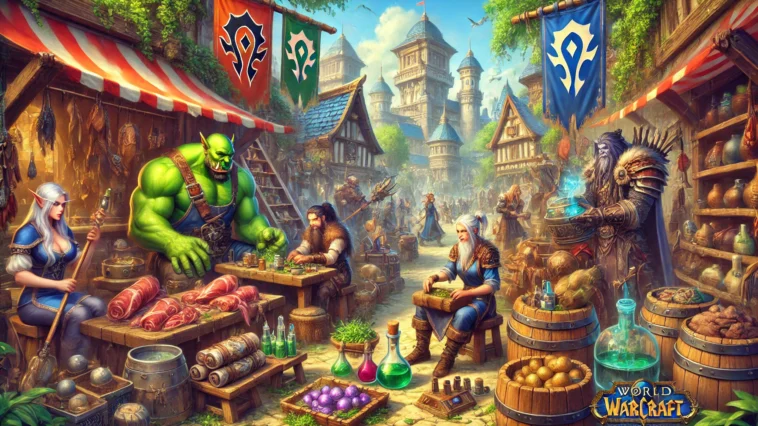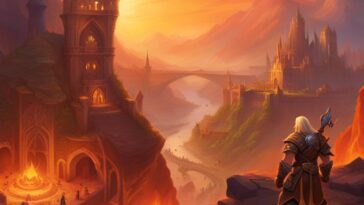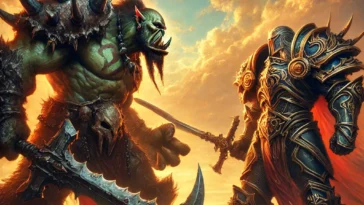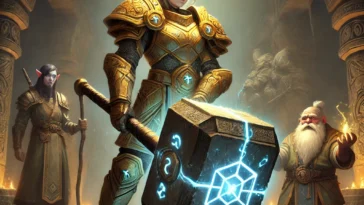Vanilla WoW
Vanilla WoW, or World of Warcraft version 1.12, represents the original version of the game before any expansions were released. It is the foundation upon which the entire WoW franchise was built, and understanding it gives insight into what made the game a global phenomenon. Here are the key things to know about Vanilla WoW:
1. Gameplay and Difficulty
- Challenging Experience: Vanilla WoW was known for its challenging gameplay. Leveling was slow and required significant time investment. Quests were often difficult and required group collaboration, particularly for elite quests.
- Class Roles and Identity: Each class had a distinct role in the game, with specific strengths and weaknesses. Hybrid classes like Druids and Paladins had to work harder to be viable in multiple roles, and talent trees were rigid, making each specialization a significant commitment.
- Limited Quality of Life Features: Many features that are common in modern MMOs, such as automated group finders, extensive quest tracking, and mounts at early levels, were absent or limited. This added to the immersion and difficulty but also required more player cooperation.
2. World Design and Exploration
- Massive, Open World: Azeroth felt enormous in Vanilla WoW. Zones were vast, and traveling between them took time. There were no flying mounts, and ground mounts were only available at level 40, making exploration a key part of the experience.
- Immersive Atmosphere: The world was designed with great attention to detail, from the music and ambient sounds to the architecture and lore. Each zone had its own unique atmosphere, contributing to the sense of adventure and discovery.
3. Social Dynamics
- Strong Community Focus: The game heavily emphasized social interaction. Forming groups for dungeons, raids, and even elite quests was essential. Guilds played a crucial role in social life, providing players with a support network for content that required coordination.
- Server Communities: There was no cross-realm grouping, so each server had its own unique community. Players built reputations, and word of mouth about a player’s skills (or lack thereof) could spread quickly.
- World PvP: PvP was an integral part of the game, especially on PvP servers where faction rivalry was intense. Spontaneous battles could erupt in contested zones, and towns like Southshore and Tarren Mill were infamous for their large-scale PvP skirmishes.
4. Endgame Content
- Dungeons and Raids: Dungeons were longer and more complex than in later expansions, often requiring careful pulling and crowd control. Raids like Molten Core, Blackwing Lair, and Naxxramas required large groups (up to 40 players) and extensive coordination.
- Epic Quest Chains: Some of the most powerful items required completing long and difficult quest chains, often involving group or raid content. This included class-specific epic quests, like the Priest’s Benediction staff or the Hunter’s Rhok’delar bow.
- Factions and Reputation: Gaining reputation with various factions was crucial for unlocking rewards, and this often involved significant grinding or completing specific content repeatedly.
5. Economy and Professions
- Gold Was Hard to Earn: Gold was much harder to come by in Vanilla WoW. Earning enough for a mount or high-level training was a major milestone, and many players engaged in farming or professions to make money.
- Professions Were Vital: Professions played a crucial role in the game’s economy and gameplay. Crafted items, potions, and gear were essential, especially for endgame content. Gathering professions were often the primary way players earned gold.
6. Lore and Story
- Rich Lore: The game’s story was deeply rooted in the lore established by the Warcraft RTS games. Many of the quests and dungeons explored the history of Azeroth, with players encountering major characters like Ragnaros, Onyxia, and Kel’Thuzad.
- Faction Identity: The rivalry between the Alliance and the Horde was a central theme, with each faction having its own storylines, characters, and zones. Players felt a strong connection to their faction, which fueled both PvE and PvP content.
7. Nostalgia and Legacy
- Foundation of WoW’s Success: Vanilla WoW set the stage for the game’s explosive growth. Its design principles—challenging content, immersive world-building, and strong social dynamics—created a deeply engaging experience that has influenced MMOs ever since.
- WoW Classic: Due to the high demand for the original experience, Blizzard released WoW Classic in 2019, allowing players to relive the game as it was in Vanilla. WoW Classic preserves the gameplay, content, and social structure of Vanilla WoW, letting both new players and veterans experience the game as it was in its earliest days.
8. Cultural Impact
- Influence on Gaming: Vanilla WoW revolutionized the MMO genre and had a lasting impact on online gaming culture. Concepts like “raid progression,” “DKP systems,” and “guild hierarchies” became mainstream because of Vanilla WoW.
- Community and Memes: Many aspects of Vanilla WoW have become part of gaming culture, from the infamous “Barrens Chat” to the Leeroy Jenkins video. These cultural moments reflect the strong community ties and the game’s influence on players.
Understanding Vanilla WoW is essential to appreciating not only the roots of World of Warcraft but also the design philosophies that made it a pioneering force in the MMO genre. It was a game that required patience, teamwork, and a love for adventure, creating memories that have endured for nearly two decades.










